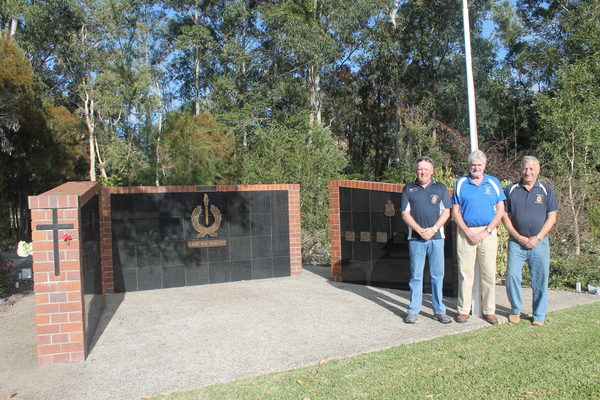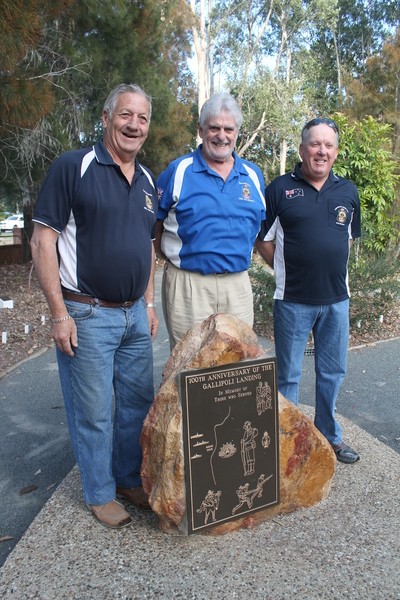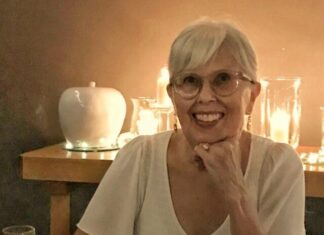
By RON LANE
TOO often they become like gardens of stone. Mere headstones in a garden of out-of-control trees and grass, sometimes chipped, sometimes so neglected that the names of the dearly departed are not able to be read.
Happy to relate this is not the case at the RSL Cemetery in Tewantin; the cemetery in which those men and women of our district who have served their country are laid to rest.
Situated at the Cooroy end of the lot, as you approach what greets the eye is definitely an endeavor of pride; and this will leave you with a feeling that will linger long after you have payed your respects.
To say that those who lie at rest in this most sacred of places are gone but not forgotten, is very true.
“This cemetery is unique in as much as it is one of only five owned by the RSL throughout Australia. We are very proud of this, and the way in which it is kept has many families contacting us to say thanks for the respect that we show their family members,” Tewantin RSL Sub-branch president Steve Drake said.
To not only achieve this overall standard but also maintain it through the years is no easy task. In cases such as this there is usually one person who is willing to not only drive it, but also stay there for the long run. In this instance the person responsible is Bruce Huntington, member of the board of directors for the Tewantin sub-branch.
Bruce Huntington is a definite local. Born in Pomona he spent an early part of his education as a student of the Tewantin State School, before shifting to Sydney where he completed his education at the Newtown Technical College.
After finishing school Bruce entered the workforce being apprenticed as a wall and floor tiler.
Bruce received his call up to National Service in 1965 but it was delayed because of his apprenticeship. On entering the army and completing basic training at Kapooka, he was posted to a unit in Brisbane; then in 1967/68 did a tour of duty in Malaya, serving as a member of the 8th Battalion.
After his army years he returned to Sydney and joined the RSL sub-branch at Five Dock Sydney. It was here that he met Kay, daughter of the sub-branch president, the lady who a year later was to become his wife.
It was in 1972 that Bruce decided that he had enough of Sydney, and by year’s end Bruce and Kay were in Tewantin. By 1981 he reactivated his service to the RSL by joining the Tewantin sub-branch.
Bruce first started his involvement with the cemetery in 2003 but then endured a forced break for two years due to illness.
“All up now I have been doing this for 10 years and it has definitely been worth the effort. There have, of course, been support people with me and over the years we have come a long way.”
It was mid-morning on a mild winter’s day, and as we sat and talked, despite the cemetery being located roadside to a main highway, the noise was hardly noticeable. It was as if the vehicular traffic kept its noise to a minimum as a sign of respect to those who lay at rest.
“Despite our location there is a feeling of solitude,” Bruce said. “And I think this is what gives us such a nice feeling. The addition of the section that we call the Memorial Walk, over there on our left, has really added dignity to the whole project. We are grateful to the council, we approached them for the land and they agreed.”
On entering the cemetery there are the normal grave sites with headstones fronted by white surrounds.
After passing these you come to the Columbarium. This is a three-part brick wall structure which contains recesses in the walls to receive ashes of the deceased.
The next section is the lawn cemetery which has plaques containing the relevant information of the deceased laid neatly in rows, and topped with flowers.
As we walked through this section Bruce would stop and point out different names. Names like Skelton, Johns, Cardwell, Ross and Lack, just to name a few … some former members of his sub-branch, others just old Digger mates with whom he shared a cold beer on a hot day.
“You can see why this project has become something special to me. When something becomes personal like this I make doubly sure I do a good job – you know – keeps it looking good.”
Between the grave section and the Memorial Walk stands the Honour Wall. Built in three sections, there are two side walls, each naming six conflicts involving our forces, and these stand at an angle from the main centre wall, which faces the cemetery.
Against a background of black marble tiles, is placed an Eternal Flame Replacer and below it the words Lest We Forget. To the front of the right wall stands the flag pole.
Dedicated on 20 November, 2011, the service was conducted by Padre Wing Commander Paul Goodland.
The Memorial Walk is something altogether different. This sectional has small light gravel pathways with the area divided into sections, thus enabling the visitor to walk throughout and understand the significance.
“On either side of the pathways you see there are white pegs, about 560 of them, just a small distance apart. In time these will be replaced by small plaques imbedded in a little concrete pillar and these will indicate the resting place of loved ones. Each has a small number attached and all are properly recorded,” Bruce said.
Between the pathways and the boundary fence there many small trees with leaves lying all around. In among all this you will see small white crosses and white columns bearing plaques on which are the names of battlefields from every conflict from the Boer War to Afghanistan – The Western Front, Gallipoli, the Somme, Tobruk, Kokoda, Coral Sea, Sandakan, Kapyong, Long Hais and Long Tan.
“I feel that the Battle Honours presented like that creates an atmosphere and helps people understand more,” Bruce said.
Already along the pathway there are occasional names of old Diggers on plaques and as we came to the end of the walk one in particular caught my eye.
The inscription read: Captain Stanley Young Bisset MC OAM MID 2/14TH Battalion – and this stopped me dead in my tracks.
Here was a plaque acknowledging a man considered by many Australians to be a legend. Not only as digger, but also as a sportsman, a Wallaby.
When Captain Bisset died, his passing was announced in the Sydney Morning Herald, 7 October, 2010, under the heading “A standout on the fields of war and sport”.
Among the Diggers, his courage during the Kokoda campaign was to become the start of the legend.
“He spent many years in retirement living in Noosa Waters. He was a real good bloke, well respected by all who met him; a real gentleman,” Bruce said.
As we walked through the cemetery, it became obvious that this was not his only concern, for like a lot of ex-servicemen he is deeply worried regarding the welfare of those returning from active service.
“For me when I came home my dad, a WWII veteran, was a big help. When these people come home we have to be there for them. We all have to become more aware.”
For Bruce (also a past president of the sub-branch) and wife Kay, a veteran of some 10 years service to the ladies auxiliary, the RSL is definitely a family affair. It is this form of dedication that makes our RSL clubs what they are today.
At the Dawn Service on 25 April, 2016, when the Last Post is played, join the bus crowd and visit the cemetery.
If, like me, you have not done this before, we can show due respect to not only Bruce and the sub-branch, but also to those old warriors who lay at rest – for they are truly Our People.







